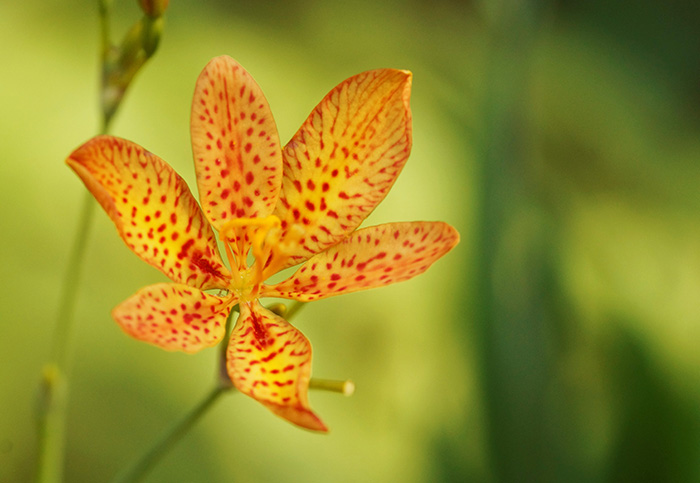
Photo by William Hanley.
Botanical name: Iris domestica (syn. Belamcanda chinesis)
Common name: Blackberry lily
Family name: Iridaceae (Iris Family)
Plant type: Herbaceous perennial
Native range: Himalayas, to Russia, Japan and Philippines.
Location in Duke Gardens: Culberson Asiatic Arboretum
Site requirements: Full sun
USDA Hardiness Zones: 5-10
Iris domestica, also known as blackberry lily, is a wonderful, drought tolerant perennial that serves well in borders and formal gardens, as single plants and en masse. These dainty flowers are one of my favorites because they add a lot of interest in the summer and fall with their color, flower shape and fruit.
This species has orange flowers, with little red specks covering the petals, and a yellow center. However, other species of blackberry lily are mostly red and yellow. Iris domestica is especially unusual after it flowers, forming a spiral or corkscrew shape by closing up its petals and twisting together. For this reason, I find them a fun plant to have in a children’s garden, where kids can compare what the flower looks like before and after it blooms.
The fruits form in a cluster of deep purple, almost black berries. They are encased in what looks to me like a green balloon. Once the berries are ripe, the balloon breaks open, showing off the dark fruit. As the season continues and it starts to get cooler, the balloon and the fruit turn brown, leaving early winter interest in the garden. At this point the foliage and stalks of the flowers may start to flop and can be cut back.
I find Iris domestica to be a low maintenance perennial because of its tolerance for drought and how easily it has spread in my garden. We grow this cute plant in the arboretum below the Discovery Garden, as well as near the Doris Duke Center.
As a side note, many of you may recognize this plant as Belamcanda chinensis. It somewhat recently was changed officially to Iris domestica. This change was made after molecular DNA studies showed that Belamcanda chinensis is in fact related to iris and should be renamed under the genus Iris.
